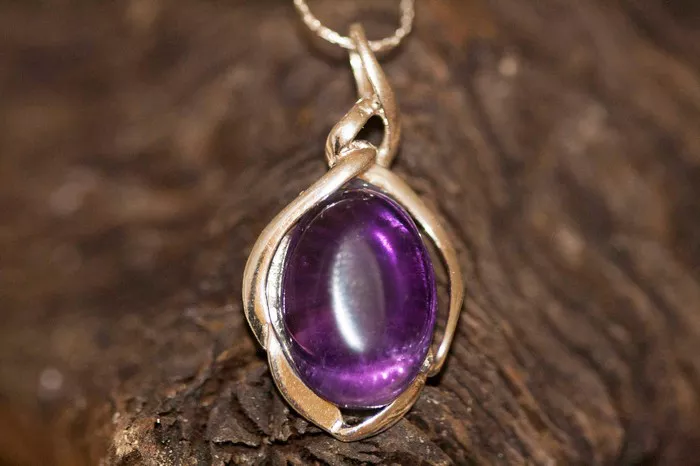Amethyst crystals, with their enchanting lavender hues, have captivated humans for centuries. Their name derived from the Greek word “amethystos,” meaning “not drunk,” hints at their legendary ability to prevent intoxication—a belief that has persisted through ancient civilizations and into modern times. But beyond their mystical lore, amethyst crystals hold a fascinating geological story. This article aims to provide a detailed, scientific exploration of how these beautiful crystals form, delving into their geological origins, mineral composition, and the processes that shape their unique appearance.
Geological Origins of Amethyst Crystals
Amethyst crystals are a variety of quartz, a common mineral found in igneous, metamorphic, and sedimentary rocks. Quartz itself is composed of silicon dioxide (SiO2), one of the most abundant compounds on Earth. Amethyst’s distinctive purple color arises from trace amounts of iron and other impurities within its crystalline structure.
The formation of amethyst crystals often begins in volcanic or geothermally active regions, where magma or hot fluids rich in silicon dioxide rise to the Earth’s surface or near-surface environments. As these fluids cool and solidify, they deposit quartz crystals in various forms, including amethyst.
Mineral Composition and Crystal Structure
Quartz crystals, including amethyst, have a hexagonal crystal structure. This means that their atoms are arranged in a repeating, six-sided pattern, giving the crystals their characteristic prismatic shape. The hardness of quartz, rated at 7 on the Mohs scale, makes it a durable mineral that can withstand weathering and erosion over time.
The presence of iron and other impurities within the quartz lattice is crucial for the development of amethyst’s color. Specifically, iron ions (Fe3+) substitute for silicon ions within the crystal structure, causing light to scatter in such a way that it appears purple to the human eye. The intensity and shade of the purple can vary depending on the concentration and type of impurities present.
Processes of Crystal Formation
1. Magmatic and Hydrothermal Deposition
One of the primary ways amethyst crystals form is through magmatic and hydrothermal processes. When magma or hot, mineral-rich fluids from deep within the Earth rise and interact with cooler rocks, they can deposit quartz crystals. In hydrothermal systems, hot water dissolved various minerals, including silicon dioxide, and carries them to the surface or near-surface environments. As the water cools, it precipitates minerals, often forming veins of quartz, including amethyst.
2. Cavities and Void Filling
Amethyst crystals can also form within cavities or voids in rocks. These cavities may be created by the dissolution of other minerals, the collapse of underground structures, or the movement of faults and fractures. As silicon-rich fluids fill these voids, they can crystallize into amethyst. The shape and size of the cavity often dictate the form of the resulting crystals, leading to a variety of morphologies, from small, prismatic crystals to large, geode-like formations.
3. Metamorphic Processes
In metamorphic rocks, amethyst crystals can form under high temperatures and pressures. As rocks are subjected to these extreme conditions, minerals within them can recrystallize, forming new crystals, including quartz. If the rock contains the necessary impurities for amethyst formation, these new quartz crystals will exhibit the purple hue.
Growth Mechanisms and Crystal Morphologies
The growth of amethyst crystals involves a complex interplay between the chemical composition of the fluid, temperature, pressure, and the geometry of the space in which they form. Several growth mechanisms contribute to the development of these crystals:
1. Normal Growth
In normal growth, crystals form by the gradual addition of atoms to the existing crystal structure. This process leads to the development of well-formed, prismatic crystals with smooth, faceted surfaces. Amethyst crystals grown in this way often exhibit a distinct hexagonal cross-section.
2. Overgrowth and Twinning
Overgrowth occurs when a new layer of crystals forms on an existing crystal. This can lead to the development of complex, layered structures. Twinning, on the other hand, involves the growth of two or more crystals with a shared interface. In amethyst, twinning can produce intricate, interlocking patterns that add to the crystal’s visual appeal.
3. Geodes and Druzy
Geodes are hollow, spherical or elliptical rock formations lined with crystals, often including amethyst. They form when a cavity fills with mineral-rich water that precipitates crystals as it evaporates. Druzy, or druse, refers to a thin layer of crystals covering the surface of a rock. Amethyst druzy can be found on various rock types, adding a sparkling, crystalline veneer.
Environmental Factors Influencing Crystal Formation
Several environmental factors play critical roles in the formation of amethyst crystals:
1. Temperature and Pressure
Temperature and pressure influence the solubility of minerals in fluids and the rate of crystal growth. Higher temperatures and pressures generally favor the dissolution of minerals, while cooler temperatures and lower pressures promote crystallization. The specific temperature and pressure conditions at the site of amethyst formation will affect the crystal’s size, shape, and quality.
2. Fluid Composition
The chemical composition of the fluid in which amethyst crystals form determines the types and amounts of minerals that precipitate. Silicon dioxide is essential for quartz formation, while trace elements such as iron are crucial for the development of amethyst’s color. The presence of other minerals, such as alumina, potassium, and sodium, can also influence the crystal’s growth and appearance.
3. Rock Type and Structure
The type and structure of the surrounding rock can also impact amethyst crystal formation. Rocks with porous or fractured textures provide pathways for fluid flow and spaces for crystal growth. The composition of the host rock can also affect the chemistry of the precipitating fluids, influencing the color and quality of the resulting crystals.
Conclusion
Amethyst crystals are a beautiful and intriguing variety of quartz, formed through a combination of geological processes and environmental factors. Their distinctive purple color arises from trace amounts of iron and other impurities within their crystalline structure, giving them a mystical and enchanting appearance.
Related topic:
- What Zodiac Is Amethyst Good For
- How Do Different Metals Affect Your Amethyst Butterfly Necklace?
- 7 Reasons to Gift a Green Amethyst Necklace


